Swan river daisies are a lovely addition to the landscape, thanks to their soft-textured leaves and delicate blooms. A broad range of pastel colors are available, and they blend in nicely with other garden plants.
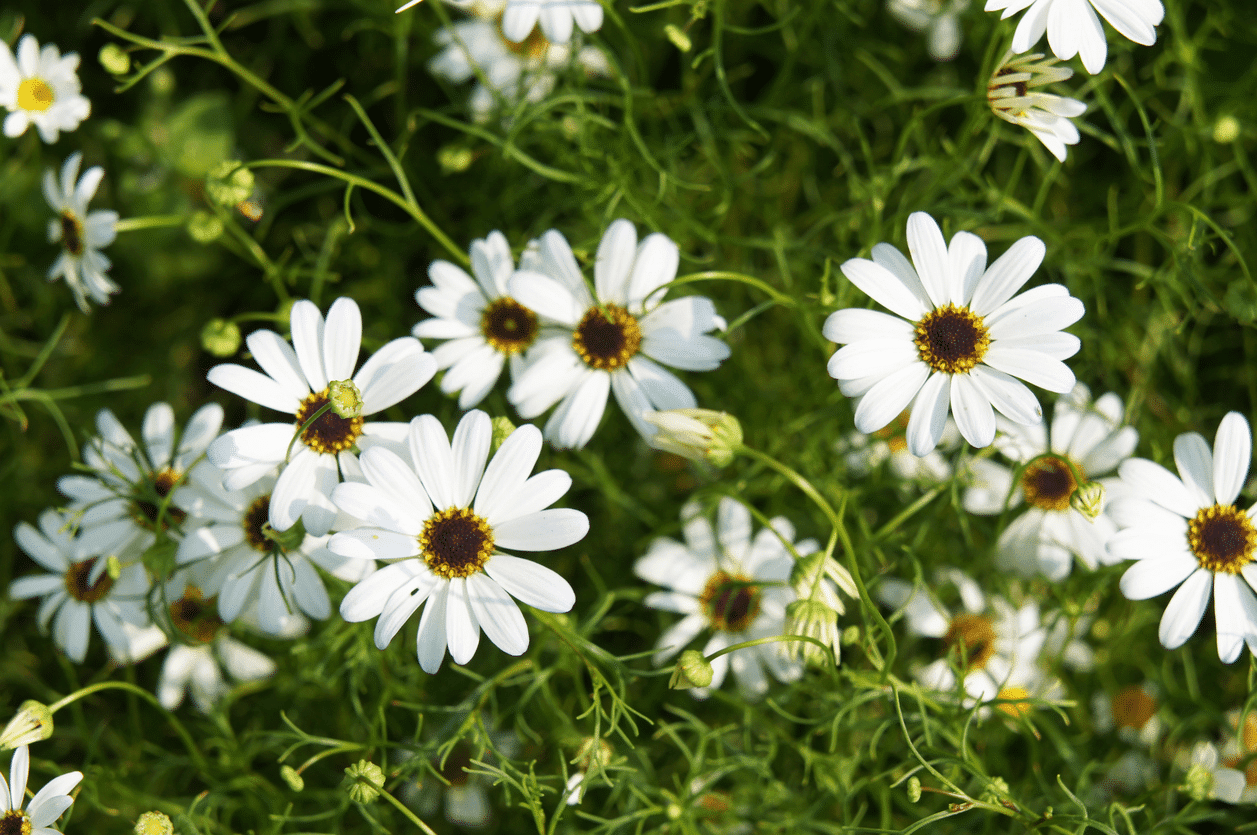
Image Source: Gardening Know How
Even though there are several reasons why a homeowner might plant flowers or build new flower borders and landscapes, the alternatives are unlimited. You can visit Guy About Home for more gardening information.
Additions of blooming plants, whether to add dramatic height and color or to stimulate the presence of pollinators, may convert ordinary front or backyards into visually engaging garden sanctuaries.
A single blossom, the Swan River daisy (Brachyscome iberidifolia), rewards its gardeners with an abundance of tiny, delicate flowers and a pleasant, subtle smell.
What is Swan River Daisy?
A flower that you can plant every spring for your beautiful garden? Well, Swan River Daisy is the flower you need.
Although the Swan River daisy (Brachyscome iberidifolia) is a native of Australia, you may find its variety in gardens throughout the United States of America. Using Swan River daisies as borders or to cover vast areas of a garden bed or in containers is a great idea.
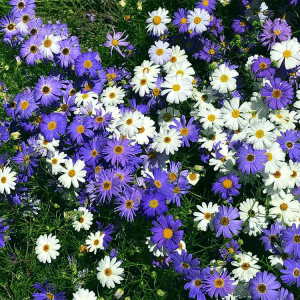
Image Source: Australian Seed
Swan River Daisy Features
The popular name “swan flower” comes from the flower’s native Australian habitat along the banks of the Swan River. Someone initially found the plant in this area. There is a scientific term for it: Brachycome, which originates from the Greek words brachys and kome.
The Swan River Daisy has the following characteristics:
- It is a hardy perennial in USDA zones 9 to 11 but is most often cultivated as an annual in zones 2 through 8.
- It is famous for flower gardens, boundary plantings, and container ensembles because of its easygoing attitude and lengthy flowering period (summer to autumn).
- It is possible to find a Swan River daisy in a wide range of colors and a central disk of different hues.
- Flower stalks that reach 12 to 18 inches in height may be seen on these plants. There are just a few blossoms per inch in diameter. However, the flowers make up for this lack of size with their quantity.
Swan River Daisy When To Plant
You should set out these lovely plants in the spring shortly after the last expected frost date. Their spent blooms should be removed periodically during the growing season to ensure that they produce blossoms.
To have more ideas on how you can plant and store your Swan River Daisy. You can check out the tub decor remedy for your desired flower garden!
Swan River Daisy Germination
The Swan River Daisy, or Brachyscome iberidifolia, can be planted outside after the risk of frost has passed. For early bloom, plant seeds inside at 21C (70F) 6 weeks before planting them outside and after the last frost. Sow seeds 25 to 30 cm apart in gardens or rockeries. For 2-3 square meters of green, mix one packet of seeds with a half-bucket of sand and compost.
Varieties of Swan River Daisy
If so many variations are available, you may have difficulty narrowing your options for swan river daisies. The swan river daisy plants have various sizes, shapes, colors, and bloom times. Here are several swan river daisies.
1. Blue Brachyscome
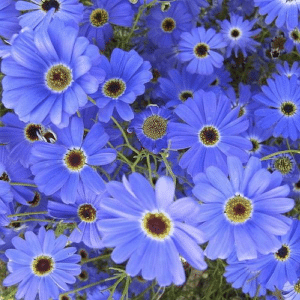
Image Source: Swallowtail Garden Seeds
This half-hardy daisy can be used as a bedding or conservatory plant in summer bedding schemes, patio, balcony displays, containers, window boxes, and hanging baskets.
It can also be used as a delicate plant in a sunny rock garden. Once it’s well-established, this “rock daisy” with cut leaves can grow well in dry, rocky, or shallow soils.
It has pretty daisy-like flowers that are light to medium mauve-blue with yellow-green to yellow-gold centers. It blooms a lot in summer and for a long time into fall if the dead flowers are removed. The plant has delicate, mid-green leaves that are deeply divided and look nice.
2. Gazania
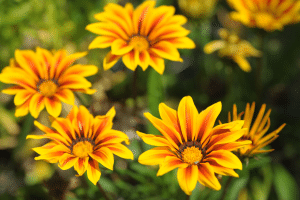
Image Source: The Spruce
Despite poor soil, hot conditions, and dryness, the daisy-like blossoms of this hardy plant continue to bloom from July until the first winter. Gazania, an annual in all except Zones 9-11 (the country’s warmest regions), is a perennial in those areas.
It blooms from mid-summer till frost. Gazania, an annual summer flowering plant, produces brightly colored daisy-like blooms from mid-summer until the first frost. Bright green or silver teethed leaves conceal the blooms (the foliage color differs between varieties).
They work well in borders, beds, and containers of many kinds. After the risk of frost has gone, transplant established seedlings outside. Keep the soil as dry as possible and avoid using fertilizer.
3.Geranium
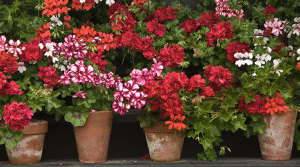
Image Source: Miracle-Gro
For more than a century, geraniums have been a favorite among gardeners. Geraniums, the traditional choice for beds, borders, and pots, are still in high demand today. You may find colorful foliage in various conventional bedding species that thrive in hot, dry climates.
Known as Martha Washington geraniums, regal geraniums are more delicate-looking and thrive better in spring and autumn when temperatures drop. Geraniums are perennials in Zones 10-11, although they are often cultivated as annuals.
You may overwinter them inside and transplant them outside in the spring if you choose. Alternatively, if provided with sufficient light, they may bloom year-round inside.
4.Lisianthus
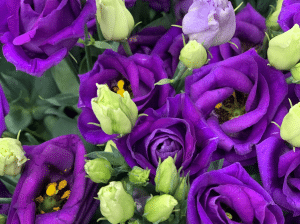
Image Source: Gardenia Of London
Lisianthus blossoms elicit gasps and sighs of delight. You may find Blue rose-like forms of this annual in some regions of the country. You’d be hard-pressed to tell it’s native to the American prairies based on the beauty of this bloom.
And lisianthus is one of the most incredible cut flowers, keeping its freshness for up to three weeks after it is removed from the stem. Lisianthus is a complex plant to cultivate. Because they are difficult to produce from seed, it is recommended that you begin with existing seedlings instead.
Do not plant them until the threat of frost has gone. They like rich, well-drained soil and whole light. Maintain a moderate level of humidity, but avoid overwatering. Many lisianthus cultivars need propping to prevent breaking their long stems; newer, smaller forms are more careless.
Can You Eat Swan River Daisy
It might be the stem, the seeds, the roots, the leaves, the fruits, or the flowers. One portion of the plant may be edible, while another is poisonous, depending on the circumstances. So, be cautious!
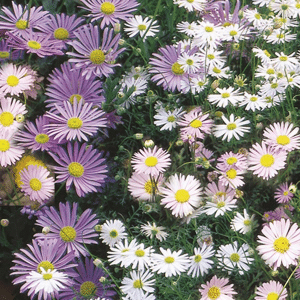
Image Source: My Garden Life
How To Grow Swan River Daisy From Seed
To grow Swan River daisies from seeds, you’ll need to get the seeds from the center of the flower.
To do this, cut the flower off its stem when it starts to fade. Put the flour in a paper bag or paper towel and let it dry completely before picking the delicate, tiny seeds from its disc. Keep the seeds somewhere cool, dark, and dry.
Then, plant the seeds indoors on a seed tray with a layer of seed-starting mix 4 to 6 weeks before the average last frost date in your area.
Keep the medium wet until the seeds sprout, which will take between 10 and 18 days. You can get the most out of the plant’s bloom cycle if you plant your seeds in two- to four-week intervals.
Is Swan River Daisy Perennial?
Swan River Daisy is a perennial plant in USDA hardiness zones 9 to 11, as long as the winters are mild enough for the plant to stay alive.
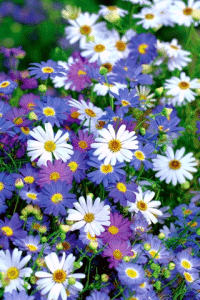
After the first frost, the flowers will stop, but the finely textured gray-green leaves will still look nice all winter.
Image Source: Garden Seeds Market
When To Sow Swan River Daisy Seeds
Swan River daisy flowers can be planted directly in the garden after the last chance of frost has passed. However, many growers choose to start the plants indoors about six to eight weeks before the later frost date. Those who can’t do that may also be successful if they try to plant seeds in the winter using this method.
Swan River Daisy Uses
You may use lovely, fragrant blooms to decorate gardens, baskets, or window boxes all summer. This flower, native to most of Australia, is particularly well-liked by bees and other pollinators. As a half-hardy annual, it prefers whole light and blooms the following year.
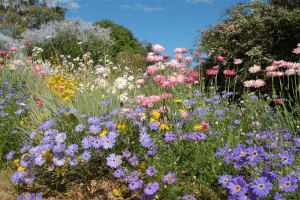
Image Source: Botanic Gardens and Parks Authority
Does a Swan River Daisy Come Back Every Year?
These daisies come back every spring or early summer and bloom until early October like a well-oiled machine. They are known to be vigorous growers; thus, if you do not want them to spread, it is best to choose kinds that do not produce viable seeds or to pick the blossoms off of the plant before it goes to the source.
How Often To Fertilize Swan River Daisy
Swan River Daisy is an excellent choice for sprucing up your patio, deck, or porch with its dense foliage and plenty of blossoms. Add vermiculite to an all-purpose potting mix and use a terracotta or clay container with enough drainage holes.
Daisy plants should be started with their roots completely submerged in soil. Ensure to properly drain the pot before moving it to its permanent placement in the sun.
Organic, slow-release, phosphorus-rich fertilizer applied a few times throughout the growing season will benefit container daisies. Deadhead potted flowers to stimulate additional blooms, just as you would in the yard.
Understanding your present soil state is the first step in determining whether or not you need to fertilize your Swan River daisy. Too much nitrogen in the fertilizer may cause slight growth, while overfertilization can cause the roots to burn.
Organic materials, such as mulch, compost, and peat, may be used to improve the soil before planting. A weekly application of a slow-release organic fertilizer is advised; avoid products with high nitrogen levels and choose one that promotes blooming instead. To prevent overfertilization, follow the package’s suggested quantity and reduce it by a small amount.
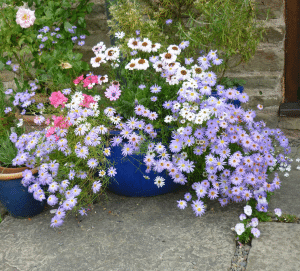
Image Source: Pinterest
Swan River Daisy In Pots
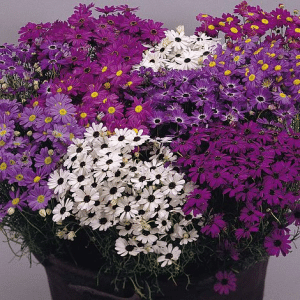
Image Source: Thompson and Morgan
Plant a Swan River daisy in a pot to add color to your patio, deck, or porch. It has bushy leaves and lots of flowers.
Use a terracotta or clay pot with enough holes for water to drain and fill it with potting soil that includes vermiculite.
You should plant swan river daisy, so the roots are completely covered by soil. Water the pot and let it drain well before moving it to a sunny spot where it will stay.
Container daisies will grow better if fed a few times during the growing season with a slow-release organic fertilizer high in phosphorus. Like in a garden, you can help flowers grow more blooms by cutting off their dead heads.
Swan River Daisy Growing Conditions
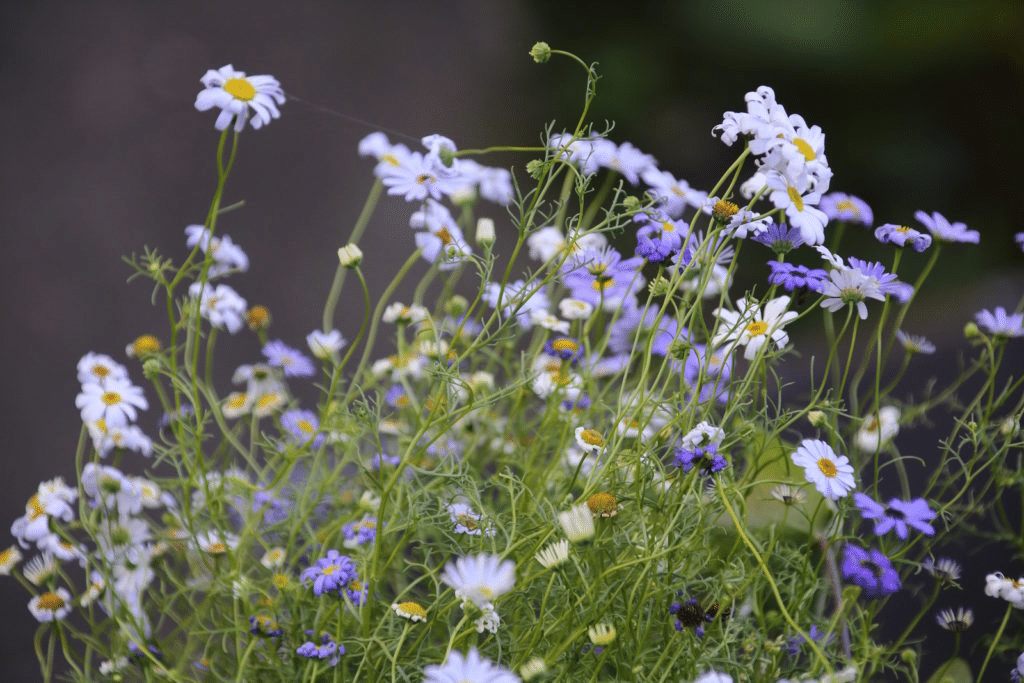
They grow best in soil that is moist, full of organic matter and has good drainage. But they can grow in sandy or clay soil and even on rocky outcroppings because they can adapt. No point where you want to grow swan river daisies. They like to get fertilizer on a reasonably regular basis.
Image Source: Garden Chronicle
Swan River Daisy Height
A vibrant annual that belongs to the Asteraceae family, Brachyscome iberidifolia, is most frequently referred to as the Swan River Daisy. It may reach a height of up to 40 centimeters and has branching stems, sharply split leaves, and daisy-like blooms.
Swan River Daisy Bunnings
Like all daisies, the Swan River daisy needs ample sunlight for prolific blooms. If the flowers on daisies grown in the shade are late, they may need to be moved.
If you plant this variety’s seeds at different times every two weeks, you’ll have flowers in your garden all season long. Also, the plant will bloom more if you cut off the spent flowers while it is in bloom.
Swan River Daisy Flowering Time
Swan River Daisies can be grown from either seeds or seedlings. Both are easy to get from commercial growers. You can also get seeds from healthy plants when dry weather and the dried ray florets have fallen off, revealing the mature seed.
Commercial seeds sprout quickly, usually in two to twelve days or two to four days.
Cuttings will increase, but their growth may not be as strong. You should plant them in full sun on clay or sandy soils, but they can also grow in the shade and will form a natural carpet if they are sown right under trees.
In coastal areas, you should plant them in May or June. In colder areas, you should plant them in peat pots or seedling flats in June or July. In places where frost is expected, sowing after frosts have passed can help seeds grow.
How Long Do Swan River Daisy Last
After the blooms’ first appearance, will they continue to bloom for many weeks?
Keep them in a temperature range of 40 to 70 degrees Fahrenheit to preserve them and keep the flowers vibrant and appealing.
Adding sugar can help your swan river daisy live longer. Feeding the stems may extend the life of your blossoms. Add three tablespoons of sugar and two teaspoons of white or apple cider vinegar to the vase water as a possible remedy for this problem. Add extra vinegar and sugar each time you change the water.
Besides this plant, we also summarize the caring issues and concerns on the plant Rose.
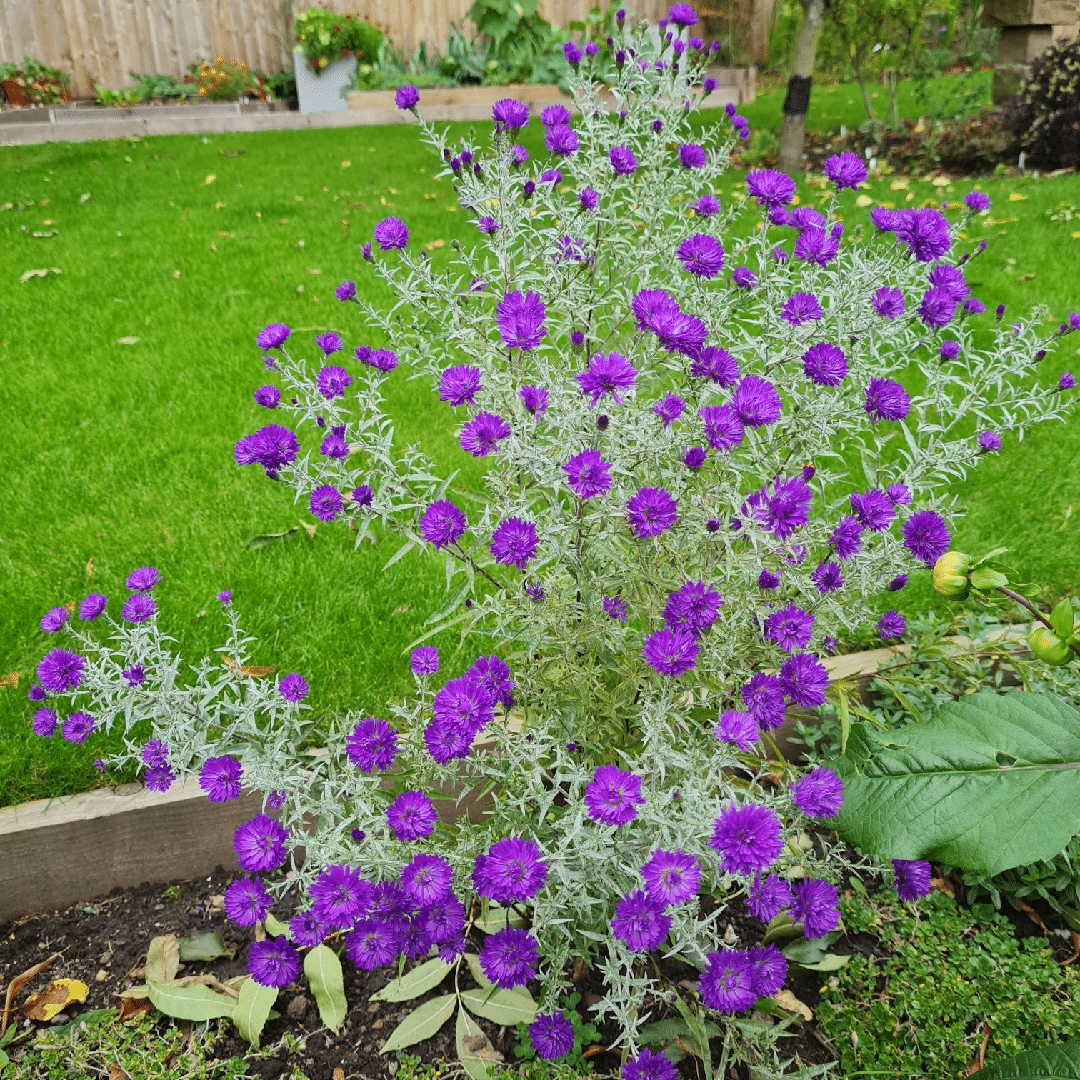
Image Source: Garden Tags
Conclusion
The Swan River daisy (Brachyscome iberidifolia) is native to Australia, but its cultivar grows in gardens throughout North America. It is easy to grow and blooms from summer to fall, which makes it a popular addition to flower gardens, borders, and potted arrangements.
Guy About Home will help you grow your beautiful flowers in every season you like. To keep you updated with the latest trends and ideas in gardening, go here!
And if daisies are your thing, try then some of these techniques that are worth taking a gander at:
